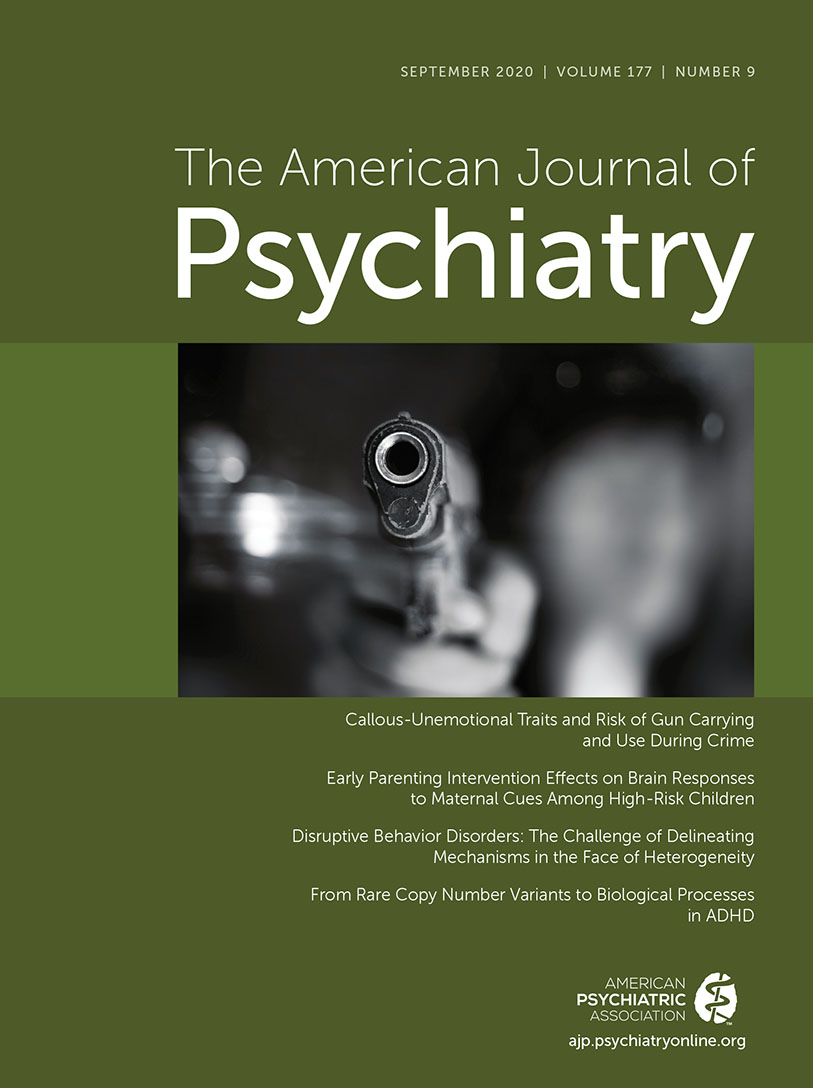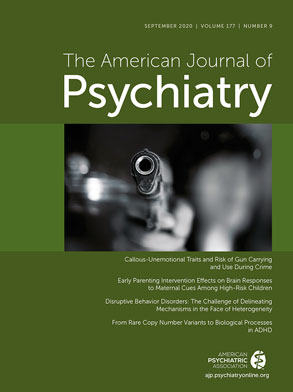A central question in developmental science, and particularly in the study of developmental psychopathology, is how and when developmental trajectories are most vulnerable to delay or deviance, leading to greater risk for later-life psychopathology. There has been increasing focus on early childhood as a foundational period setting the stage for later adaptive or maladaptive social and emotional development key to well-being or psychopathology. At the same time, there has been renewed interest—empirical support in animal models, as well as some in human subjects—in the notion that early-life experiences and exposures are uniquely influential to long-term outcomes due to heightened neuroplasticity during early childhood sensitive periods (
1).
Illustrative of this process are the significant breakthroughs in our understanding of the development of attachment with the operationalization of paradigms to study attachment in toddlers using the Strange Situation assessment. This observational assessment utilizing a mild and increasing series of stressors (separations from caretakers), during which child behavior was systematically coded, represents an innovation in methodology now more broadly used to tap a variety of emotional and behavioral constructs in early childhood. Studies utilizing the Strange Situation paradigm provided critical empirical data to inform the development of attachment systems and the parenting behaviors associated with secure or insecure attachment, building on theories articulated by John Bowlby. A large body of literature has now established the parameters of secure attachment relationships and their predictive validity (
2). There is also support for a sensitive period in early childhood when access to a nurturing and consistent caregiver has proven critical for this process to proceed in a healthy fashion (
3). With this as a framework, the Attachment and Biobehavioral Catch-Up (ABC) early intervention was designed and tested in randomized controlled trials showing significant effects for later positive behavioral outcomes, including secure attachment (
4).
What remains unclear, and what the study by Valadez et al. (
5) in this issue of the
Journal begins to elucidate, is whether the powerful foundational influence of early childhood nurturance on these positive behavioral and emotional outcomes operates through its impact on developing neural systems. The authors report on late childhood functional neuroimaging outcomes for a sample of high-risk infants and toddlers who participated with their caregivers in a randomized controlled trial of ABC. They found that children who received the ABC intervention had different brain responses to viewing their mother’s faces compared with a stranger than those who received the control condition. The authors argue that this functional brain finding is consistent with more adaptive and well-developed or mature social cognition. Importantly, this effect served as a mediator of more optimal behavioral outcomes assessed in middle childhood, suggesting further that these social cognitive neural responses served as one mechanism contributing to better behavior outcomes.
Despite their increasing salience in mental health research, it remains important to consider what the study of neural correlates adds to our understanding of human behavior and psychopathology. In many studies, including this randomized controlled trial by Valadez et al., neural correlates may point us to more specific mechanisms by which psychopathology develops and therefore serve as a guide to inform more specific targets for treatment. Even further, in investigations of neuroplasticity and the potential for greater effects of treatment during sensitive periods of brain development, neural correlates are critical to confirm and clarify the correlated neurobiological changes associated with this phenomenon.
The Valadez et al. study crosses a new threshold by demonstrating differences in neural function many years later in children who received the ABC intervention in infancy compared with those who participated in a control condition. These findings suggest that there may be enduring effects on brain functional correlates of social cognition related to the intervention. The findings from this study suggest that early caregiver nurturance plays a critical and powerful role in sculpting the development of brain systems related to affiliation and attachment in a way that predicts later child behavioral functioning. However, to make causal conclusions, even more rigorous designs that include imaging methods pre- and postintervention, as well as later in development, are needed to document direct effects of treatment on neural change and to investigate whether developmental sensitive periods with larger effects of experience/intervention can be detected and are enduring.
Such randomized designs that use imaging methods pre- and postintervention are necessary to track whether neural changes parallel those found in behavioral outcomes. While this is a difficult methodological endeavor in very young children, uses of EEG during tasks in some paradigms and resting-state functional imaging (resting-state functional MRI) that can be done during natural sleep are both methods that could be used in the future and are frequently employed in infants and very young children. Such designs are necessary to test the neural effects of a variety of interventions and/or enhancements across development. Data gleaned from such designs are critical to inform when interventions will be most powerful and whether and exactly how and when in early childhood there may be sensitive periods for adaptive skills critical for well-being.
Randomized controlled trials of early interventions with neural measures pre- and postintervention are needed and represent a new and exciting opportunity to clarify whether periods of plasticity in childhood brain development can be identified. If these sensitive periods can be identified, this can then guide the timing of prevention, health enhancement, and treatment to optimize efficacy. The findings reported by Valadez et al. provide intriguing evidence suggesting enduring neural effects in children receiving early interventions that target parenting and attachment. This study is among the first randomized controlled trials of a relatively brief early intervention that demonstrates effects on neural outcomes many years later in childhood. As such, it contributes neural data to the extant database suggestive of the powerful and enduring effects of early interventions that to date have been mostly behavioral.
While neural data represent a critical new domain, especially in the investigation of sensitive periods, the problem of reverse inference where behavioral and emotional states are inferred from neural signals remains significant, as acknowledged by Valadez et al. Therefore, significantly more work is needed to map the brain correlates of more complex social and emotional behaviors, which are of central importance to mental disorders. The problem of reverse inference also underscores why it remains so important to include rigorous assessments of behaviors and emotions in studies of early childhood developmental psychopathology. To advance this research, neural markers cannot be clinically informative without a deep characterization of behavioral and emotional correlates. Conversely, neural markers are needed to more clearly quantify mechanisms and sensitive periods. The study conducted by Valadez et al. takes a strong step in this direction and begins to elucidate the early childhood psychosocial underpinnings of healthy socioemotional trajectories suggesting neural mechanisms related to enhancing social cognition.

